Are you dealing with a clogged drain caused by paper towels? Don’t worry; we’ve got you covered! Dissolving paper towels in pipes may seem daunting, but it can be done quickly and effectively using simple household ingredients.
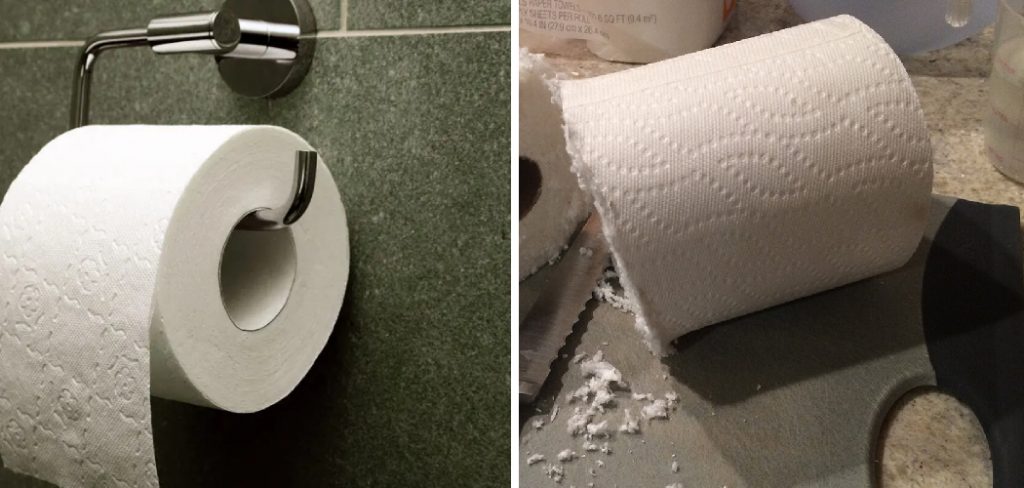
Paper towels are a common household item used to clean up spills and messes. However, flushing them down the toilet or disposing of them improperly can lead to blockages in plumbing systems. When paper towels accumulate in pipes, they can create significant clogs that disrupt drainage and lead to costly plumbing repairs.
Understanding how to dissolve paper towels in pipes effectively can help prevent these issues and maintain the integrity of your plumbing. This guide will explore methods to effectively manage and break down paper towels within pipes, ensuring smooth water flow and reducing the risk of future clogs.
What Will You Need?
To dissolve paper towels in pipes, you will need some essential household items you probably already have. These include:
- Baking soda
- Vinegar
- Boiling water
- Plunger (optional)
Once you have gathered these materials, you are ready to tackle the clog and restore your pipes to proper functioning.
10 Easy Steps on How to Dissolve Paper Towels in Pipes
Step 1. Prepare the Area
Before dissolving paper towels in pipes, it’s essential to prepare the area around your sink or toilet to ensure a smooth experience. Start by clearing the space of any items that might get in the way or be accidentally damaged during the cleaning process.
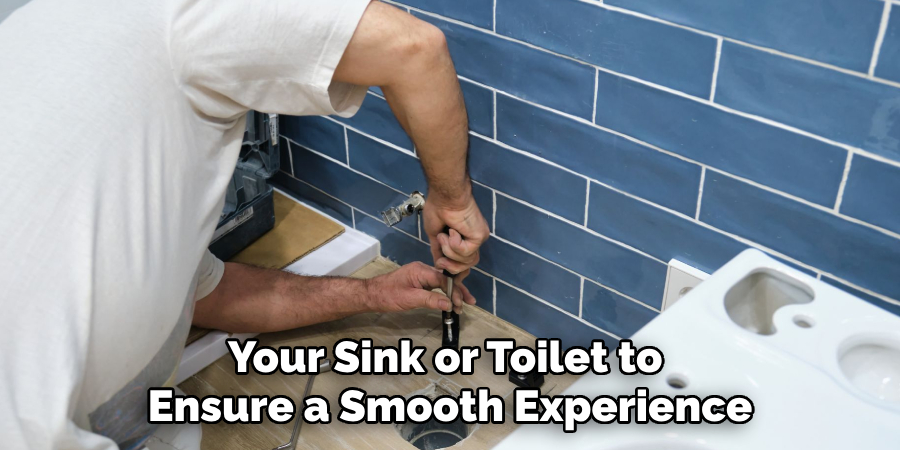
Protect surfaces by placing a towel or cloth around the work area, especially when using boiling water, as spills may occur. It’s also a good idea to wear gloves to keep your hands safe and clean during the process. Having your gathered materials within reach will make the following steps more effortless and more efficient. With the area ready, you’re set to begin confidently tackling that stubborn clog!
Step 2. Pour Baking Soda
Once the area is prepared, the next step is to pour a generous amount of baking soda into the clogged drain. About one cup of baking soda should suffice, but you can adjust this based on the severity of the clog. The baking soda works to absorb moisture and help break down the paper towel fibers.
Allow the baking soda to sit in the drain for a few minutes to maximize its effectiveness, ensuring it has enough time to penetrate and start breaking down the obstruction. This simple step is crucial in loosening the paper towels from the pipe walls and preparing for the next phase of the process.
Step 3. Add Vinegar
It’s time to introduce the vinegar after allowing the baking soda to sit. Carefully pour about one cup of white vinegar into the drain over the baking soda. The reaction between the baking soda and vinegar will create fizzing and bubbling, which helps to dislodge any stubborn particles and further break down the paper towels.
Let this mixture work its magic for about 10 to 15 minutes. During this time, the foaming action can help to clear away debris and reduce the size of the paper towel clogs, making the next steps more effective. Be patient—this chemical reaction is key to successfully dissolving the obstruction in your pipes!
Step 4. Flush with Boiling Water
After the vinegar and baking soda have had time to work, it’s time to flush the drain with boiling water. Carefully bring a kettle or pot of water to a boil, ensuring it’s not too full to prevent spills when pouring. Once the water has reached a rolling boil, slowly pour it down the drain.
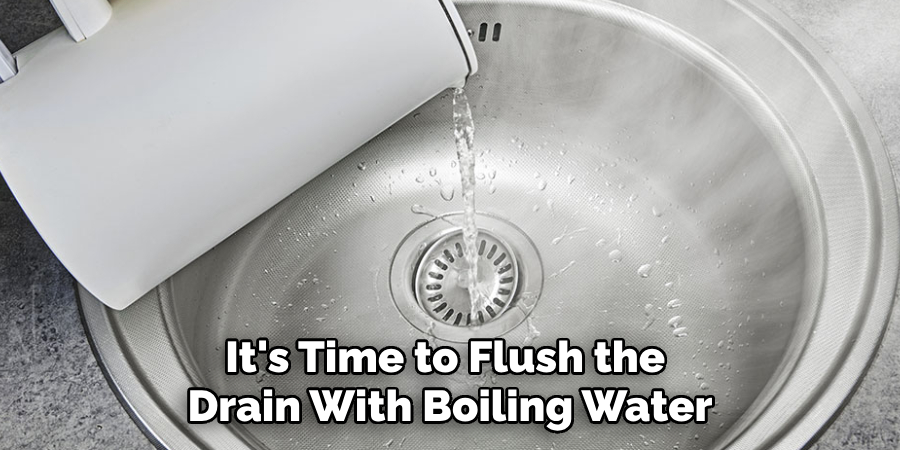
The heat from the boiling water will help to dissolve any remaining paper towel fibers and push the debris further down the pipe. It’s advisable to pour the boiling water in stages, allowing the heat to penetrate effectively, and to be cautious, as hot water can scald surfaces or skin. This step should help clear the drain and restore normal water flow.
Step 5. Use a Plunger (If Necessary)
If the clog persists after flushing with boiling water, you may need a plunger to help dislodge the remaining paper towels. Ensure enough water is in the sink or toilet bowl to cover the plunger’s cup, as this creates a better seal. Firmly press the plunger down and pull up vigorously to create suction.
Repeat this motion several times, which can help to break apart the clog further. Be patient and persistent, as this mechanical action can effectively clear stubborn blockages that chemical reactions might not resolve. Once you notice improved drainage, you can proceed confidently with the next steps.
Step 6. Inspect the Drain
After using a plunger, it’s essential to inspect the drain to assess the effectiveness of your efforts. Look for any remaining water pooling in the sink or toilet, which may indicate that the blockage still needs to be fully cleared. If the water is draining correctly, congratulations! You have successfully dissolved the paper towels in your pipes.
However, if you notice that the drainage is still slow or there are signs of obstruction, you may need to repeat the previous steps—starting with adding baking soda and vinegar. Regularly inspecting your plumbing can help you catch these issues early, preventing more severe clogs in the future.
Step 7. Repeat the Process if Necessary
Don’t be discouraged if you find that the clog persists even after attempting the previous steps. Sometimes, multiple treatments are required to entirely eliminate stubborn paper towel blockages. Begin again by pouring another cup of baking soda down the drain, followed by another cup of vinegar.
Allow this mixture to react for the recommended time, then flush with boiling water once more. In some cases, it may take two or three rounds of this process to achieve optimal results. Patience is essential, as consistent efforts will help to break down the paper towels and restore normal water flow in your pipes.
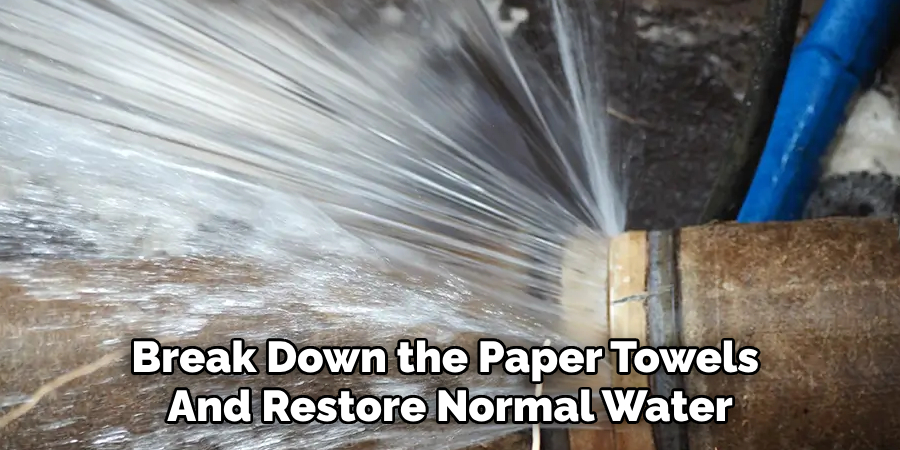
Step 8. Use a Wet/Dry Vacuum
If the clog is still stubborn after repeating the baking soda and vinegar treatment, consider using a wet/dry vacuum to vacuum up the debris. Start by setting the vacuum to liquid mode, ensuring it’s suitable for this task. Place the vacuum hose over the drain, creating an excellent seal to maximise suction.
Turn on the vacuum and let it run for several seconds to remove any loose paper towels and debris from the drain. This method can effectively remove larger clumps that may be causing the blockage, giving your plumbing system a better chance of clearing. If successful, recheck the drainage to see if the water flows freely.
Step 9. Chemical Drain Cleaners (As a Last Resort)
If all previous methods have failed to clear the clog, you may need a chemical drain cleaner. This should be considered a last option, as these products can harm your plumbing and the environment. Carefully read the instructions on the product’s label, and ensure you’re wearing protective gear such as gloves and goggles.
Pour the recommended amount directly into the drain, allowing it to sit for the specified time to work through the clog. After the waiting period, flush the drain thoroughly with hot water to clear out any remaining chemicals and debris. Keep in mind that frequent use of chemical cleaners can lead to pipe damage, so it’s best to use them sparingly and explore other preventive measures for keeping drains clear in the future.
Step 10. Prevent Future Clogs
Consider implementing preventive measures to reduce the likelihood of future clogs and maintain a healthy plumbing system. Make it a habit to dispose of paper towels, grease, and other non-flushable materials in the trash rather than the sink or toilet.
Additionally, regularly flushing your drains with hot water can help clear any buildup before it leads to blockages. Installing a drain strainer can also catch debris and prevent larger items from going down the drain. By staying proactive about your plumbing care, you can enjoy a smoother flow and extend the life of your pipes.
By following these steps, you can effectively dissolve paper towels in your pipes and restore normal water flow.
Does Hot Water Dissolve Paper Faster?
Yes, hot water can dissolve paper faster than cold water. Heat increases the rate of chemical reactions, which helps to break down paper fibers more quickly.
Additionally, hot water causes the fibers in paper towels to swell and soften, making them easier to dissolve and flush away. However, it’s important to note that using boiling or extremely hot water alone is not enough to clear clogs caused by paper towels. The combination of heat with other methods, such as vinegar and baking soda, is necessary for effective results.
So, while hot water alone may help speed up the process, it should be used with other techniques for best results.
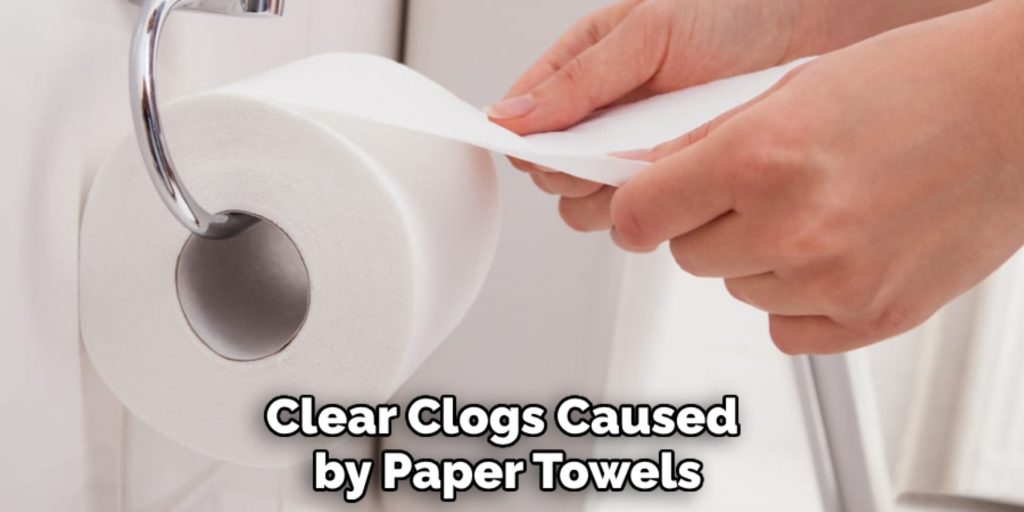
Conclusion
How to dissolve paper towels in pipes can be a challenging task, but with the right techniques and a bit of persistence, it is achievable.
Start by employing natural solutions like baking soda and vinegar to break down the paper towels, supplemented by mechanical methods such as plunging or using a wet/dry vacuum when necessary.
If these methods fail, chemical drain cleaners may serve as a last resort, although their use should be limited to protect your plumbing. To prevent future clogs, maintain good disposal habits and regularly check your plumbing system.
By being proactive and taking steps to dissolve paper towels effectively, you can ensure a smoother, more efficient drainage experience in your home.
